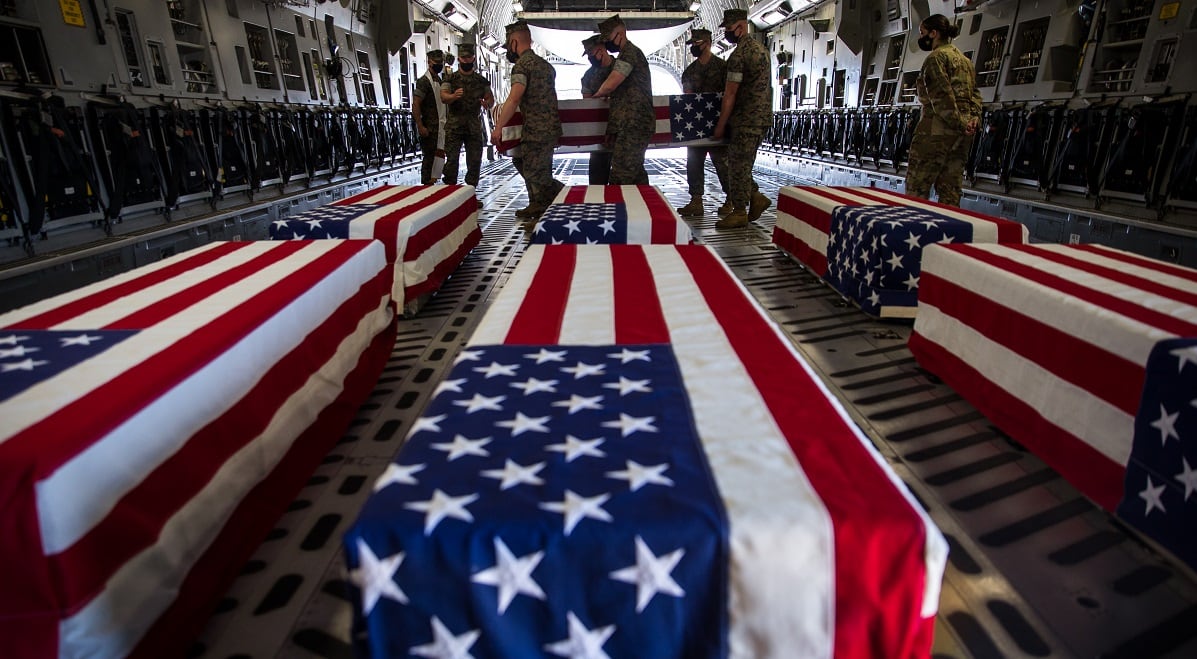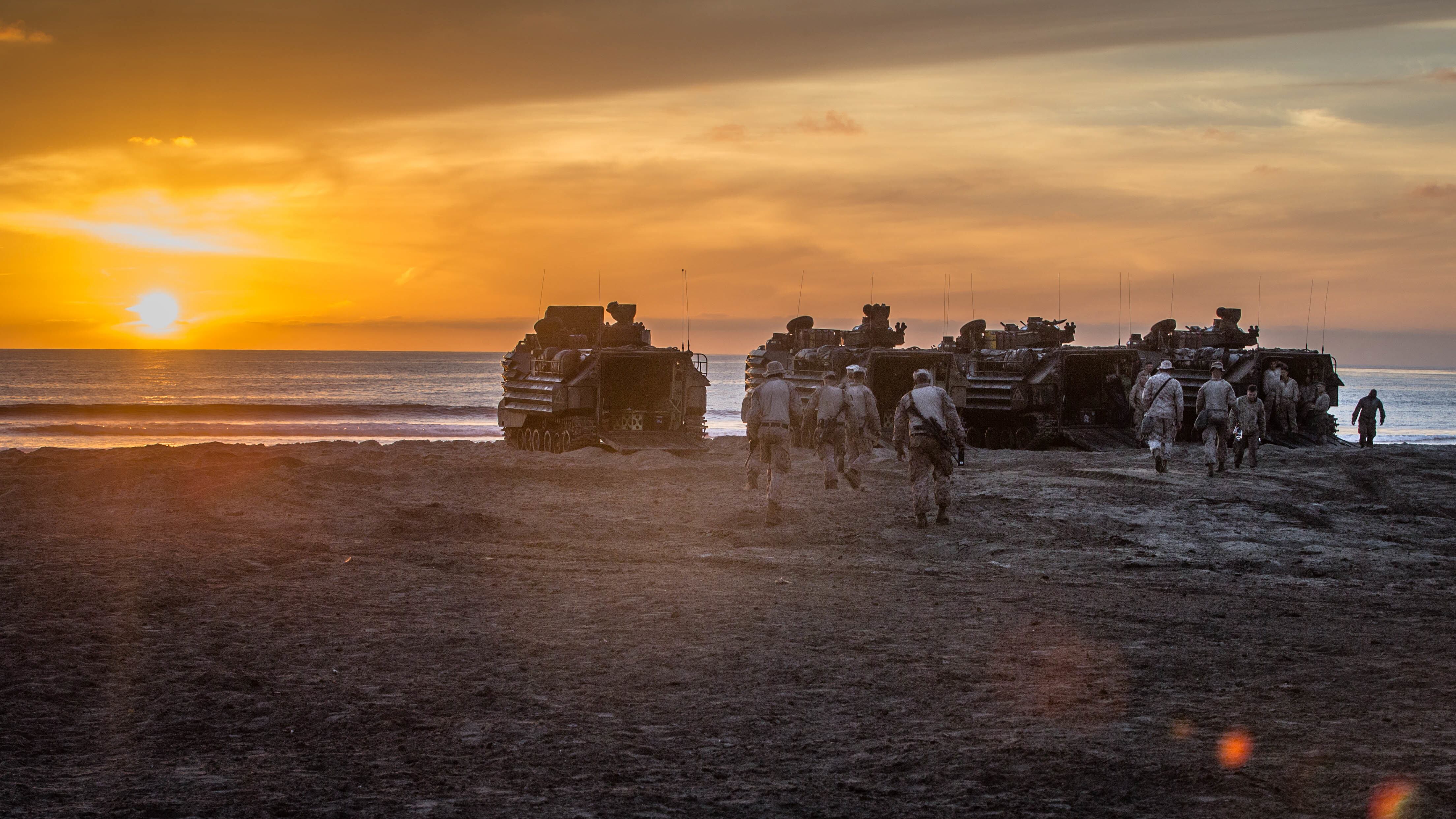On Friday the Marine Corps launched another investigation into the July 30, 2020, amphibious assault vehicle accident that resulted in the death of nine service members.
On July 30, 2020, an AAV attached to the 15th MEU set off from the amphibious transport dock Somerset to conduct an amphibious raid on San Clemente Island, California. During the raid three vehicles ended up having mechanical issues, one never left the beach, one was forced to be towed back to the beach, while the third, known as track five, ended up sinking off the California coast.
Eight Marines and one sailor, all attached to Battalion Landing Team 1/4 and in that third vehicle, died. It was the deadliest AAV training accident in Marine Corps history.
This will be the third investigation triggered by the accident and will look at the “the facts and circumstances surrounding the forming of the 15th Marine Expeditionary Unit,” Capt. Andrew Wood, a spokesman for Headquarters Marine Corps, told Marine Corps Times on Tuesday.
RELATED

The new investigation will be led by Lt. Gen. Carl E. Mundy III, commander of Marine Corps Forces Central Command, and will focus on the training and equipment readiness the occurred in the formation of the MEU, Wood told Marine Corps Times.
“The goal is to ensure the Marine Corps is doing everything possible to prevent this type of mishap from happening again,” Wood said.
The Marine Corps has not said why it is launching this investigation now.
‘Confluence of human and mechanical failures’
The Marine Corps investigation into the incident, released in late March, found that a “confluence of human and mechanical failures caused the sinking of the mishap AAV and contributed to a delayed rescue effort.”
The vehicle was found to have multiple leaks, which caused water to slowly raise inside the vehicle, eventually causing the vehicle commander to order an evacuation. The leaks were worsened by a transmission that was leaking oil.
Eventually the transmission failed, triggering a chain reaction that left the AAV dead in the water and the bilge pumps unable to pump water out fast enough to keep it from sinking.
With no safety boats in the water, two nearby AAVs were forced to come to the rescue. But one struck the sinking vehicle, turning it broadside into the waves. Soon a large wave sent water flooding into the vehicle, causing it to go nose up and rapidly sink into the ocean with 11 service members still on board.
Three Marines eventually floated to the surface; two were hospitalized while one was pronounced dead on the scene.
Seven Marines and one sailor never made it to the surface alive.
Here are the names of the Marine and sailor who died that day: Pfc. Bryan J. Baltierra, 18, of Corona, California, a rifleman. Lance Cpl. Marco A. Barranco, 21, of Montebello, California, a rifleman. Pfc. Evan A. Bath, 19, of Oak Creek, Wisconsin, a rifleman. U.S. Navy Hospitalman Christopher Gnem, 22, of Stockton, California, a hospital corpsman. Pfc. Jack Ryan Ostrovsky, 20, of Bend, Oregon, a rifleman. Cpl. Wesley A. Rodd, 22, of Harris, Texas, a rifleman. Lance Cpl. Chase D. Sweetwood, 18, of Portland, Oregon, a rifleman. Cpl. Cesar A. Villanueva, 21, of Riverside, California, a rifleman. Lance Cpl. Guillermo S. Perez, 19, of New Braunfels, Texas, a rifleman.
The investigation into the incident, released by the Marine Corps in late March, took seven months to complete and focused on the training and equipment issues that led to the accident.
That investigation found that most of the service members with BLT 1/4 had not completed necessary egress training ― while two were not even swim qualified.
The AAV platoon similarly was missing several necessary predeployment training, including the Marine Corps combat readiness evaluation all units receive before deploying.
The AAVs sent to the 15th MEU from the 3rd Assault Amphibian Battalion had serious mechanical issues, the investigation found, after nearly all of vehicles had spent almost a year on the administrative deadline lot.
When the battalion was notified that the vehicles were in poor condition, instead of sending over better vehicles the platoon slated to join that MEU was loaded with three extra mechanics and told to get the job done.
So far at least two commanders have been fired for their part in the accident, including Col. Christopher J. Bronzi, the former commander of the 15th MEU, and Lt. Col. Michael Regner, the commander of Battalion Landing Team 1/4.
Immediately after the incident the Naval Safety Center also launched an investigation into the accident, which will not be released publicly.





